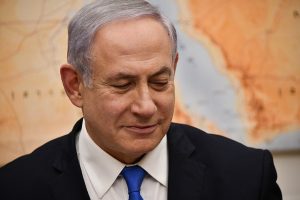By Andy Worthington
Tuesday, January 12, 2010
One year ago, as President George W. Bush prepared to leave office, there were high hopes that Barack Obama would move swiftly to undo his administration’s ruinous legacy of torture, “extraordinary rendition” and indefinite detention without charge or trial. The most potent icon of the Bush administration’s overreaction to the terrorist attacks of September 11, 2001, was the “war on terror” prison in the US naval base at Guantanamo Bay, Cuba, which opened on January 11, 2002.
By Andy Worthington
Tuesday, January 12, 2010
One year ago, as President George W. Bush prepared to leave office, there were high hopes that Barack Obama would move swiftly to undo his administration’s ruinous legacy of torture, “extraordinary rendition” and indefinite detention without charge or trial. The most potent icon of the Bush administration’s overreaction to the terrorist attacks of September 11, 2001, was the “war on terror” prison in the US naval base at Guantanamo Bay, Cuba, which opened on January 11, 2002.
The new president started well, freezing the much-criticized Military Commission trial system on his first day in office, and issuing executive orders the day after upholding the absolute ban on torture, ordering the humane treatment of wartime prisoners in interrogation, and promising that Guantanamo would be closed within a year.
After this bold start, however, the program slipped, first into inertia, as an interagency task force, established to review the prisoners’ cases, found that information about them was scattered throughout numerous departments and agencies. Instead of drawing on evidence that the men had largely been rounded up by the US military’s allies in Afghanistan at a time when bounty payments were widespread, the administration began to fear releasing prisoners who might resort to terrorism after their release (perhaps because they had been radicalized by their treatment).
Senior officials also appeared to ignore court rulings dealing with the prisoners’ habeas corpus petitions, even though, in four out of every five cases examined, judges found that the government’s supposed evidence consisted mainly of confessions made under torture or duress, or allegations made by other prisoners, who were either unreliable or had been bribed or coerced into doing so.
After the inertia came cowardly backtracking. In April, when Republican uproar followed the court-ordered release of Justice Department memos purporting to redefine torture so that it could be used by the CIA, and another court order to release photos of prisoner abuse in Afghanistan and Iraq, Obama stopped the release of the photos and quashed plans to bring some innocent Guantanamo prisoners to live in the United States.
These men were the Uighurs, Muslims from China’s Xinjiang province, seized by mistake, who could not be repatriated because of fears that the Chinese government would torture them.
By capitulating to pressure, and putting pragmatism before principles, Obama showed Republicans that he would cave in if pushed hard enough. And his opponents – like some cowardly members of his own party – responded by passing legislation preventing any prisoner cleared for release by the Bush administration, by the courts (following successful habeas petitions) or by Obama’s task force from being resettled in the US.
Obama’s capitulation, and his inability to control Congress, also made it extremely difficult to find new homes for the dozens of other cleared prisoners from countries including Algeria, Egypt, Libya, Syria, Tunisia and Uzbekistan, who, like the Uighurs, could not be repatriated because of fears that they would be abused upon their return.
America’s allies in Europe were asked to accept these prisoners, and to refrain from pointing out that the Washington was doing nothing to clean up its own mess. The result was that by the end of the year, only nine men had been given new homes in Europe.
As Obama’s principled stand eroded, he also dismayed lawyers, progressives and human rights activists by reintroducing the Military Commissions and stating that, according to legislation passed by Congress in the wake of the 9/11 attacks (the Authorization for Use of Military Force), he was entitled to hold dozens of other men indefinitely, without charge or trial.
As critics noted accurately, the result was a three-tier system that made a mockery of justice. Essentially, if a conviction could be guaranteed, prisoners would be put forward for federal court trials, as happened in November with Khalid Sheikh Mohammed and four other men accused of involvement in the 9/11 attacks. However, if the evidence was weaker, they would face trials by Military Commissions; and if it was weaker still or unusable – alarmingly, because it had been obtained through torture, which is unreliable, as well as inadmissible in either federal courts or the Military Commissions – the men in question would be held indefinitely.
As the anniversary approached, and the administration announced that 116 prisoners had been cleared for release by the task force, the repatriation of six Yemenis offered the slim hope that one of the major obstacles to the closure of Guantanamo was finally being addressed. Yemenis comprise 86 of the remaining 198 prisoners, but long-standing fears about the Yemeni government’s ability to monitor released prisoners meant that, of the 561 prisoners released between May 2002 and November 2009, only 16 were Yemenis.
However, in the wake of the failed plane bombing on Christmas Day, and exaggerated claims that the would-be bomber, Omar Farouk Abdulmutallab, had connections with Saudi prisoners released from Guantanamo in a terrorist group in Yemen, Obama once more capitulated to hysterical fear mongering. He announced that no more prisoners would be returned to Yemen in the foreseeable future.
This not only cast a dark cloud over Monday’s anniversary, dashing hopes that the prison’s closure will take place any time soon; it also, again, involved a refusal by the president to fight back against lies and distortions, by holding firm to two important points that were easily ignored in the media’s blizzard of fear.
First, there was no reason to suppose that the cleared Yemenis, held for eight years, had any connection to a recently established terrorist group in their homeland whose ranks appeared to be peppered with Saudis; and second, the handful of Saudis released from Guantanamo, who had apparently become involved in terrorism, were released not by Barack Obama, but by George W. Bush, despite warnings from American intelligence services that they posed a threat to the United States.
Andy Worthington is the author of “The Guantanamo Files: The Stories of the 774 Detainees in America’s Illegal Prison” (published by Pluto Press). Visit his Web site at: www.andyworthington.co.uk. He wrote this commentary for THE DAILY STAR.

 Listen to the Article
Listen to the Article 



